#Galictis
Text

A greater grison (Galictis vittata) in Las Pumas Rescue Center, Cañas, Costa Rica
by Bernard Dupont
#greater grison#grison#mustelids#galictis vittata#galictis#mustelidae#carnivora#mammalia#chordata#captive animal#las pumas rescue center
74 notes
·
View notes
Text
Let my cousin fuck my girlfriend
Gay Rimjob And Bigdick Bareback Anal Sex
Naked gay cowboy porn and man penetrating men first time Elders
Bird box blowjob lol CaHeadQueen
Redhead pregnant PAWG Gets fucked by BBC with failed cumshot
Esposa putinha gemendo com pau no cuzinho
(Guerreiro e Gatinha Manhosa) loira rabuda dando a buceta, apanhando na cara e gozando junto comigo
fucked by straight motorbiker
Sexy teen blonde Blake wakes up and please her pussy with large vibrator in bed
Cute feet no hands strip tease socks off
#symphysis#misotyranny#Ieper#signetwise#Jyoti#colza#beautification#amaya#fungoid#malanders#porterage#Coloma#Waugh#Donato#MacClesfield#toter#quasi-disastrous#sleetier#bawls#Galictis
0 notes
Note
OH MY GOD A GRISON IS A MUSTELID AND THAT'S WHY YOUR BLOG IS CALLED "WEASELS IN SPACE" OH MY GOD IT ALL MAKES SENSE NOW!!!
YEP THAT'S IT
all the avatars etc are the greater grison, Galictis vittata, which is native to Central America and northern South America. It's a generalist hunter and largely diurnal, which is why it's on my short list for predators that might localize singing mice by ear, but they're also Just Funny Guys.
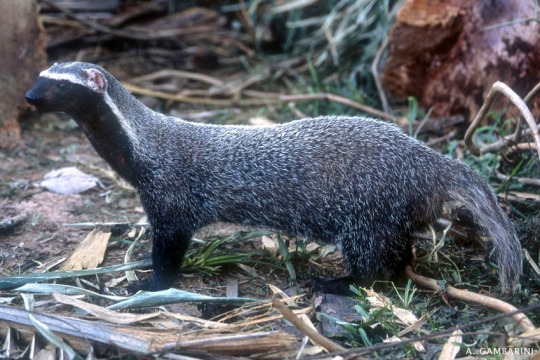
People usually assume it's a honey badger / ratel, but if you look at a ratel next to a grison you can see that it's kind of like putting a fisher next to a wolverine. Here's the ratel:
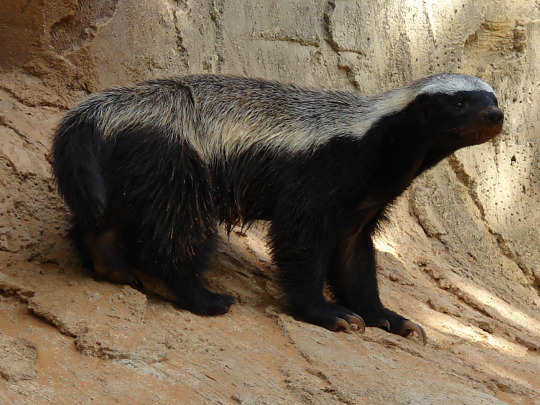
Despite the similar coloring, grison are not closely related to badgers generally or ratels more specifically. You can see this in the phylogeny below, which has neat little sketches of the lesser grison (G. vittata) next to its home in the Ictonychinae with the polecats and the ratel itself (Mellivora capensis) right there on the very edge of the true badgers in the Melinae. All similarities are examples of convergent evolution.
By the way, you can see the tayra (Eira barbara) on this phylogeny too--they're a basal branch of the Guloninae with the wolverines.

32 notes
·
View notes
Photo

Galictis cuja - Lesser Grison
#lesser grison#grison#south american wolverine#galictis#cuja#mustelidae#carnivora#mammalia#chordata#animalia#least concern#south america#parana river basin#pampas#patagonia#altiplano#grassland#forest#scrubland#mountain#terrestrial#the faunal frontier#thefaunalfrontier
44 notes
·
View notes
Photo
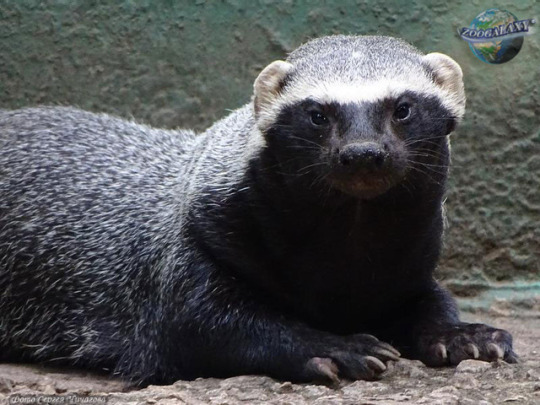
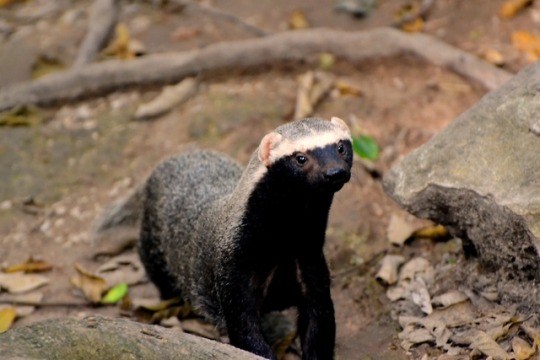

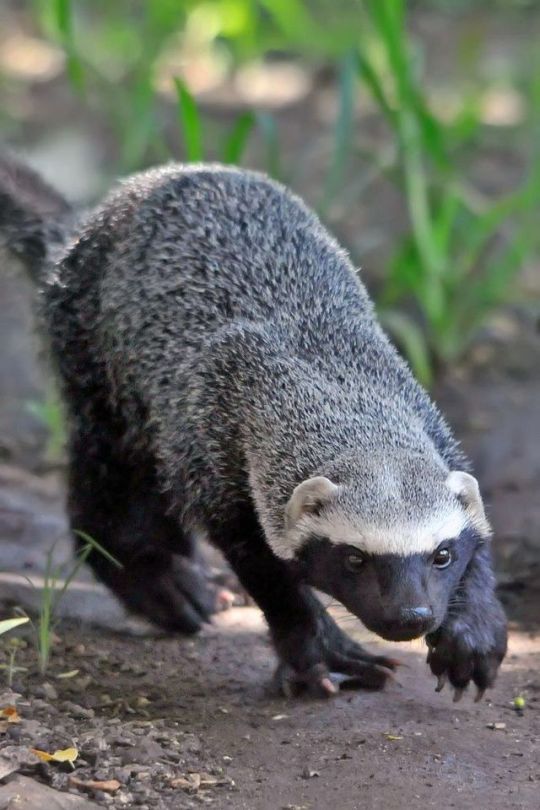
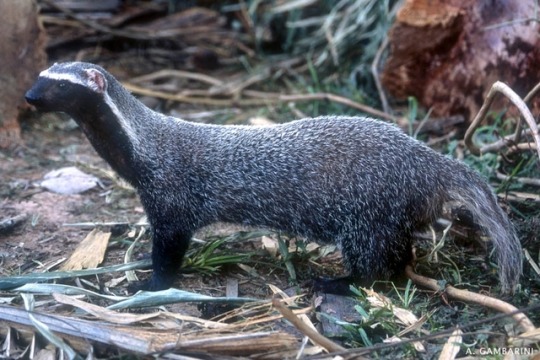
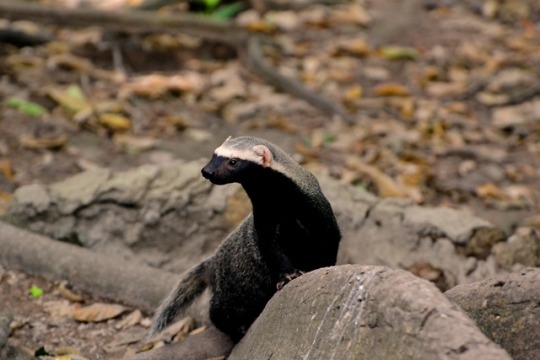
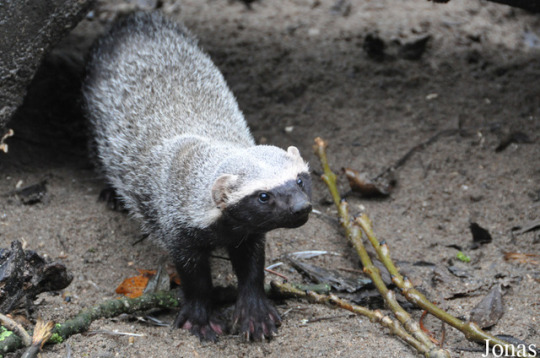
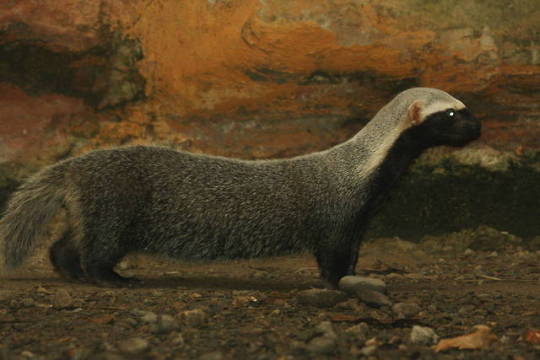

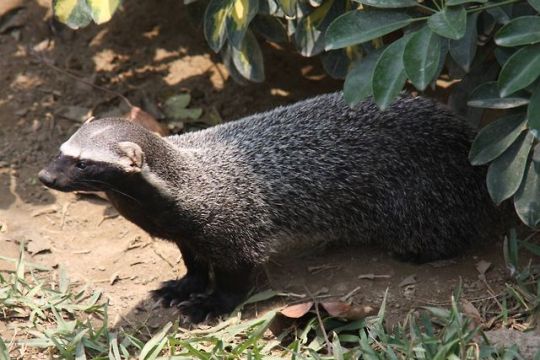
The greater grison (Galictis vittata), is a species of mustelid native to Southern Mexico, Central America, and South America. The greater grison is a slender animal with short legs, a long neck, and a short, bushy tail. They have a head-body length ranging from 18 to 24 inches. Adults weigh between 3.3 and 8.4 lbs in the wild, but may become larger when reared in captivity.
The back, flanks, top of the head, and the tail, are grizzled grey in color, while the rest of the body is much darker, and usually solid black. A narrow whitish stripe separates the darker and lighter fur on the head and shoulder, but not further back, where the two colors may, in some individuals, blur into one another. The tail is covered with bushy hair similar in color to that on the animal's back. The head is flattened and broad, with short, rounded ears, and dark brown to black eyes. The legs are muscular, with five webbed toes, each ending in a sharp, curved claw.
Litters of up to four young are born from March to September, after a gestation period of 39 days. Their eyes open after two weeks, and they begin to eat solid food at three weeks, reaching the adult size in just four months.
Greater grisons are native to Central and South America, ranging from southern Mexico in the north, to central Brazil, Peru, and Bolivia in the south. They inhabit a wide range of forest and cerrado habitats, and are usually seen near rivers and streams. In some regions, they may also be found in cultivated areas, such as plantations and rice paddies.
Greater grisons are primarily terrestrial, although they can climb trees and swim well. They are mostly diurnal, and only occasionally active at night. They live alone or in pairs, with home ranges of at least 1.6 sq miles, and a very low population density, such that they are rarely encountered in the wild. They spend the night sleeping in cavities in hollow logs or beneath tree roots, or else in the abandoned burrows of other animals.
Little is known of their diet, although it consists largely of small vertebrates, such as fish, amphibians, birds, and other mammals. While hunting, they move in a zigzag pattern, making short bounds and occasionally stopping to look around with their heads raised and sniff the air. When moving more cautiously, they press their bodies close to the ground in a movement that has been described as 'snake-like'. They have been reported to respond to threats with a series of grunts that rise in intensity and frequency until they become rapid barks, and finally a single loud scream with their teeth bared.
Like many other mustelids, greater grisons possess anal scent glands that secrete a yellowish or greenish musk. Although not especially noxious in comparison with that of other species, this can be sprayed at attackers, as well as being used to mark the grison's territory.
571 notes
·
View notes
Video
Galictis cuja - Quique by Natacha Francisca
Via Flickr:
Mustélido Chileno Es muy parecido a un hurón, con cuerpo largo una cola y patas cortas. Su pelaje es áspero y en su región dorsal desde la cabeza a la cola presenta una franja blanca. De hábitos carnívoros y nocturnos. Muy agresivo.
6 notes
·
View notes
Photo
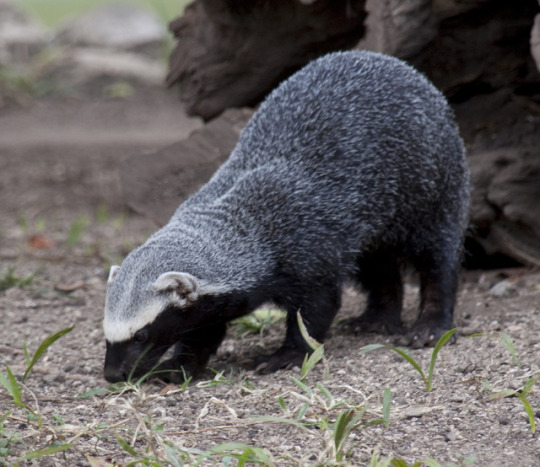

Greater Grison (Galictis vittata)
The greater grison (Galictis vittata), is a species of mustelid native to South and Central America. They inhabit a wide range of forest and cerrado habitats, and are usually seen near rivers and streams. They are typically found at elevations below 500 metres (1,600 ft), but they may be found as high as 2,000 metres (6,600 ft) in some parts of the Bolivian Andes.
Greater grisons are primarily terrestrial, although they can climb trees and swim well. They are mostly diurnal, and only occasionally active at night.[4] They live alone or in pairs, with home ranges of at least 4.2 square kilometres (1.6 sq mi), and a very low population density, such that they are rarely encountered in the wild. They spend the night sleeping in cavities in hollow logs or beneath tree roots, or else in the abandoned burrows of other animals...
Read more: Wikipedia
photographs by Tony Hisgett | Flickr CC
892 notes
·
View notes
Photo
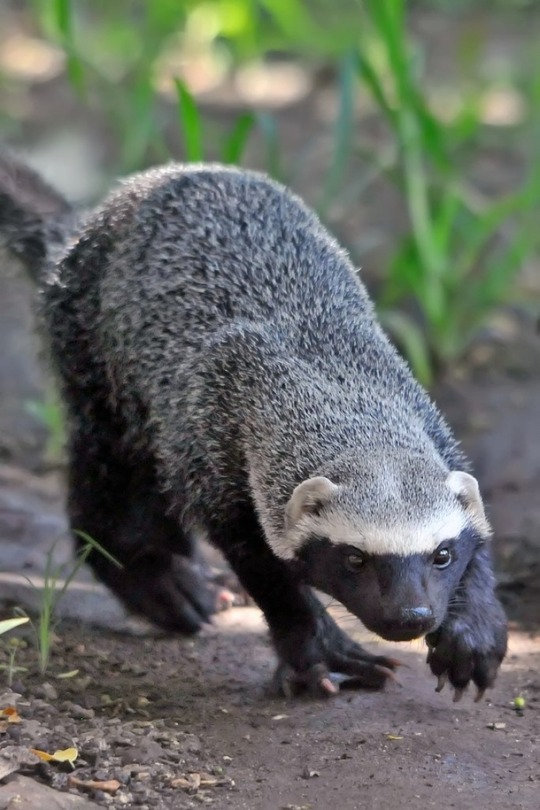
Greater grison Galictis vittata -
105 notes
·
View notes
Photo
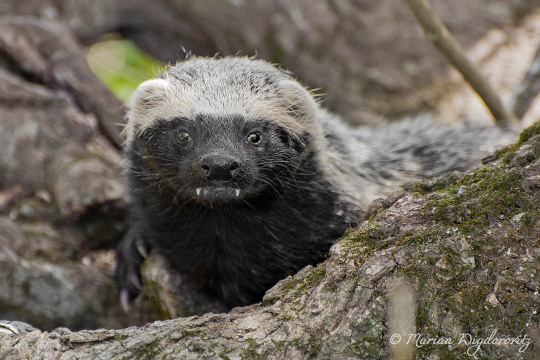
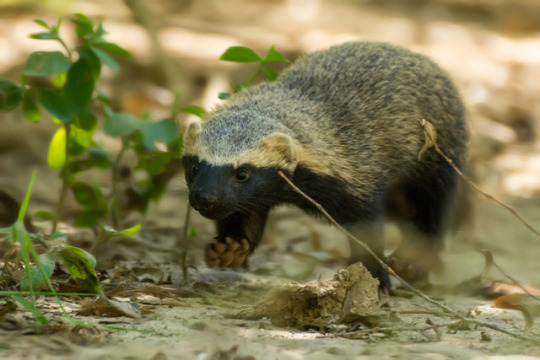

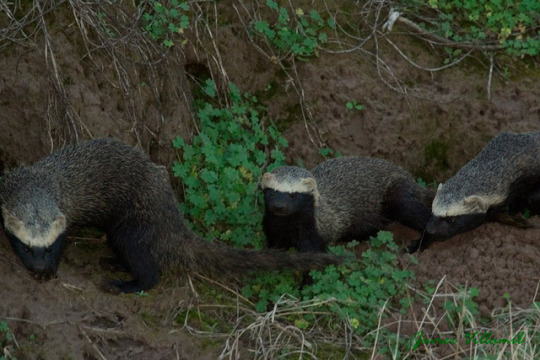


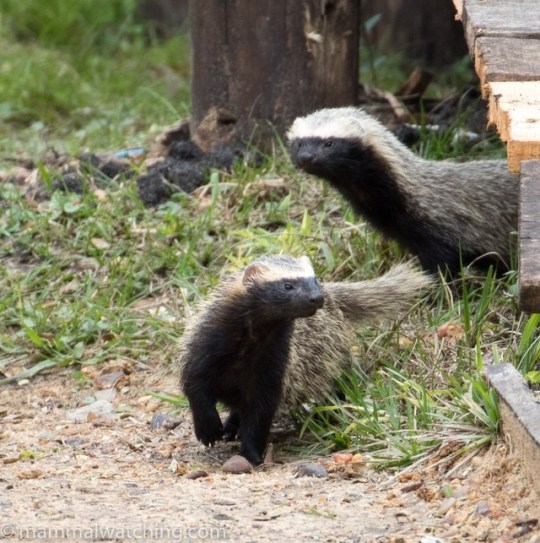


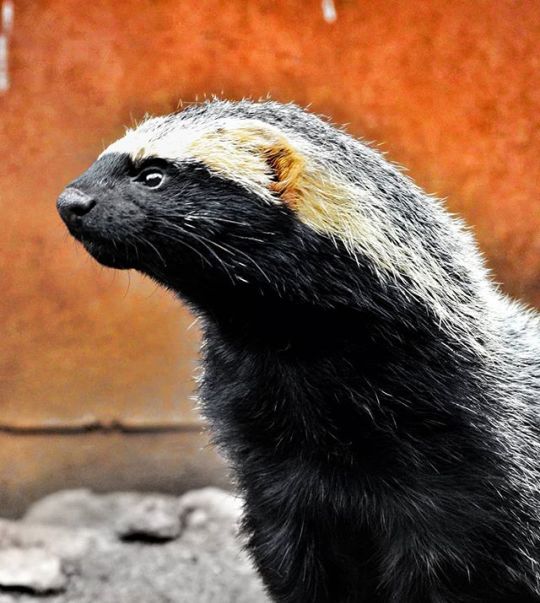
The lesser grison (Galictis cuja) is a species of mustelid from South America. Lesser grisons have a long, slender body, short legs, and a bushy tail. They have a long neck and a small head with a flattened forehead and rounded ears. They are smaller than the closely related greater grison, with a head-body length of 11 to 20 inches. Adults weigh anything from 2.6 to 5.3 lbs. Females are slighter smaller and more slender than males.
The top of the head, the back and flanks, and the tail have coarse black guard hairs with buff-colored tips over a softer undercoat, giving them a grizzled greyish color. The remainder of the body is black or nearly so, apart from a pale buff-colored stripe running from the forehead to the shoulders along the lower margin of the grey furred area. The feet are webbed, with five toes ending in sharp, curved, claws. They are semi-plantigrade, walking partly on the soles of their feet, and, despite the webbing, their feet are adapted more for running and climbing than for swimming. They possess anal scent glands that spray a noxious chemical similar to, but probably weaker than, that of skunks.
Lesser grisons are monogamous, hunting together when raising their litters of two to five young. They are either solitary, or live in small family groups of parents and offspring, which travel together in single file. They are said to be particularly fierce, and to play with their food for up to 45 minutes before eating it. During the night, they sleep in hollow trees or natural crevices, or else in excavated burrows. Burrows may be as deep as 13 ft, and have entrances obscured by leaves.
Lesser grisons are found throughout most of southern South America from sea level to as high as 13,800 ft elevation. They are found in a wide range of habitats, although generally near water, including grasslands, forests, scrub, and mountain meadows. They are also known to inhabit agricultural land and pasture in some areas.
Lesser grisons are carnivorous, feeding on small to medium rodents, as well as rabbits, birds, frogs, lizards, and snakes. They are among the major predators on cavies, including wild guinea pigs, and also of nesting grebes. Lesser grisons hunt primarily during the day, locating their prey at least partly by scent.
Lesser grisons can be tamed if raised from a young age. They were used in the past to hunt wild chinchillas, pursuing them down burrows in a similar manner to ferrets, although chinchillas are now too rare for this to be viable. They are still sometimes kept to control rodents on farms, although they may also be hunted, especially where they are thought to prey on domestic poultry.
195 notes
·
View notes
Text
Etymology: Weasel-Type Things
One of my favorite things (I have so many favorite things!) is etymology, and when I’m able, I try to figure out what the word origin of the taxa I’m working with means. Here are the Mustelids! As you’ll see, some of them are more creative than others.
MUSTELIDAE
Genus Arctonyx - Hog Badger
“Bear Claw”, Gr. “arktos” - bear + Gr. “onyx” - claw, talon
Genus Eira - Tayra
“Wild Cat”, Guarani “eira” - wild cat
Genus Galictis -Grisons
“Weasel Weasel”, Gr. “gale, galee” - weasel, ferret + Lat. “ictis” - weasel
Genus Gulo - Wolverine
“Glutton”, Lat. “gulo” -- glutton
Genus Ictonyx - Striped Polecats
“Weasel Claw”, Lat. “ictis” - weasel + Gr. “onyx” - claw, talon
Genus Lyncodon - Patagonian Weasel
“Wildcat Tooth” Gr. “lync, lynx” - wildcat + Gr. “odon” - tooth
Genus Martes - Martens
“Marten”, Lat. “marten” - marten, from Old High German “mard” - marten
Genus Pekania - Fisher
“Fisher”, Abenaki “pekan” - fisher
Genus Meles - Badgers
“Badger”, Lat. “meles” - badger, marten
Genus Mellivora - Honey Badger
“Honey Devourer”, Lat. “mel, mellis” - honey + Lat. “vorarx, voracis” - swallower, devourer
Genus Melogale - Ferret Badger
“Badger Ferret”, Lat. “meles” - badger, marten + Gr. “gale, galee” - weasel, ferret
Genus Mustela - Weasels
“Mouse Hunter” maybe, Lat. “mustela” - weasel, from Lat. “mus” - mouse + maybe Lat. “telu, teli” - weapon
Genus Neovison - American Mink
“New Weasel”, Gr. “neos” - new + Swedish “vessla” - weasel
Genus Poecilogale - African Striped Polecat
“Spotted Weasel”, Gr. “poikilos” - spotted + Gr. “gale, galee” - weasel, ferret
Genus Taxidea - North American Badger
“Badger”, Lat. “taxus” - badger, from Old High German “dahs” - badger
Genus Vormela - Marbled Polecat
“Little Worm”, Ger. “Wormlein” - little worm
Genus Aonyx - African Clawless Otter & Oriental Small-Clawed Otter
“No Claw”, Gr. “a” - without + Gr. “onyx” - claw, talon
Genus Enhydra - Sea Otter
“In Water”, Gr. “en” - in + Gr. “hydros” - water
Genus Lontra - New World Otters
“Otter”, Vulgar form of “lutra, lytra” - otter
Genus Lutra - Old Wolrd Otters
“Otter”, Lat. “lutra, lytra” - otter
Genus Hydrictis - Spotted Necked Otter
“Water Weasel”, Gr. “hydros” - water + Lat. “ictis” - weasel
Genus Lutrogale - Smooth-Coated Otter
“Otter Weasel”, Lat. “lutra, lytra” - otter + Gr. “gale, galee” - weasel, ferret
Genus Pteronura - Giant Otter
“Wing Tail”, Gr. “pteron” - wing, feather + Gr. “ura” - tail
46 notes
·
View notes
Photo
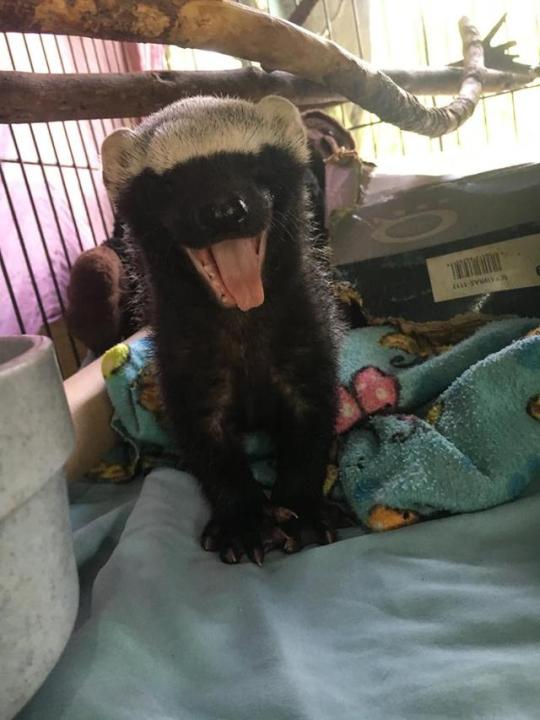

Kids Saving the Rainforest - Costa Rica:
Balu, a grison (Galictis vittata) , just upgraded from the nursery to rehabilitation in preparation for release. Great job Balu!
79 notes
·
View notes
Photo
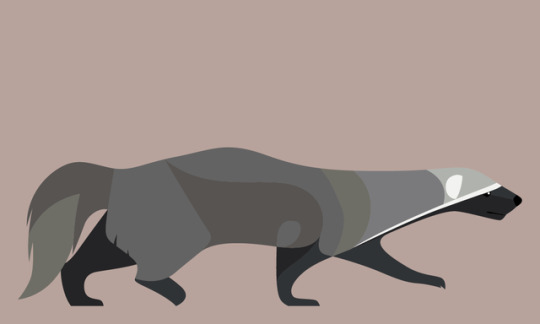
Galictis vittata - Greater Grison
#greater grison#grison#south american wolverine#galictis#vittata#mustelidae#carnivora#mammalia#chordata#animalia#least concern#north america#mexico#yucatan#central america#south america#andes#guiana highlands#amazon river basin#llanos#forest#savanna#mountain#terrestrial#the faunal frontier#thefaunalfrontier
66 notes
·
View notes
